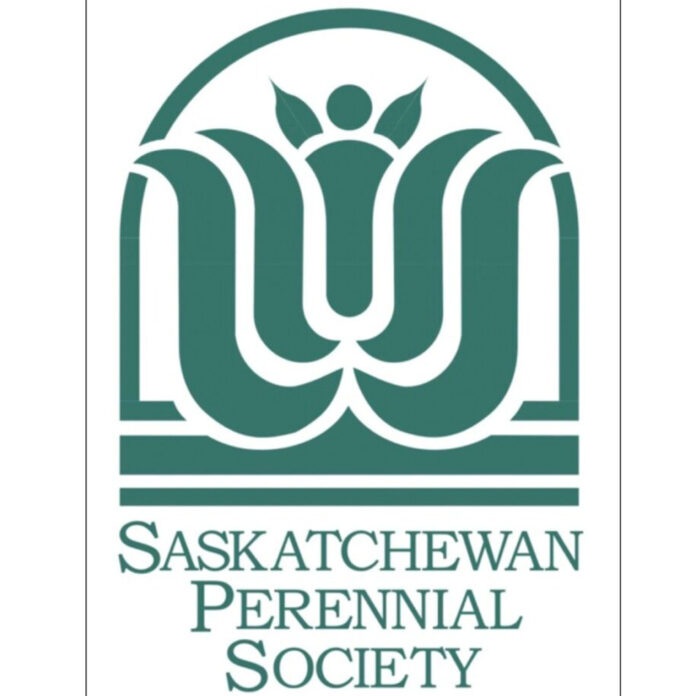Sara Williams
Saskatchewan Perennial Society
This is the first time I have ever written a gardening article with political overtones. I visited Ukraine about 10 years ago with a good friend who has cousins in a small village in Ukraine he had never met. We had no contact information and arrived unannounced. Yet we were overwhelmed with kindness and food and love. And there were sunflowers everywhere.
How did sunflowers make the journey from the Americas to Ukraine?
Native to South and Central America, the original plants were believed to have been multi-branched, bushy and with smaller flower heads. Variously dated to over 4500 years ago, the edible seeds have been used by indigenous peoples since time immemorial: for flour in bread and cakes, or roasted and eaten. The oil and pigments were used as sunscreen and the stalks in construction. In Peru, the Aztecs worshipped sunflowers.
Spanish sailors were thought to have brought sunflower seed to Europe where they were established in ornamental gardens in Madrid, Spain by the early 1500s. They were introduced to other parts of Europe by later that century. John Gerard, the English herbalist, writing in 1597, considered them to be somewhat of an aphrodisiac:
“We have found by triall that the buds before they be flowered, boiled and eaten with butter, vinegar and pepper after the manner of artichokes, an exceeding pleasant meet, surpassing the artichoke far in procuring bodily lust.”
During the 1700s, the Orthodox Church had issued a diktat for the period of Lent which banned the consumption of food made from various oils and fats but had omitted sunflower oil from the list, thus ensuring its popularity. By 1769, they were being cultivated for oil production and had arrived in Ukraine by the early 1800s. Today, they are widely grown as a field crop for their edible seeds (which contain up to 49% oil). They are considered a premium edible oil because of their light colour, high level of unsaturated fatty acids and high smoke point. Ukraine is now the world’s leading sunflower oil producer with 12.24 million tonnes in 2017. And no village garden is without them.
Why are they called Sunflowers?
The large round flower heads are thought to resemble the sun. As well, they are heliotropic, tilting to follow and face the sun as it moves across the sky. The botanical name (Helianthus annuus) repeats this information: Helios means sun and anthos flower; annuus indicates it is an annual, living for one season.
Most sunflowers are tall plants, generally 7 to 10 ft in height, but there are also many dwarf varieties of 2-3 feet available. The flower heads are held on thick bristly stems and can be 4-12 inches in diameter. A composite flower, each head is composed of 1,000 to 2,000 individual flowers. The outer ray flowers (single petalled in cream, yellow, red, orange and burgundy) surround the interior disc flowers which are usually brownish-orange. The large heart-shaped leaves are toothed and bristly.
Growing Sunflowers
Sunflowers should be sown directly where they are to be grown in ordinary garden soil, in full to partial sun, once the soil is warm. Sow the seeds 1 to 2 inches deep and about 2 feet apart. They will germinate within two weeks. They are fairly drought tolerant.
Aside from their ornamental value as garden and cut flowers, sunflowers provide both people and bird seed.

Peace
Throughout Ukraine’s history, the sunflower has been used as a symbol of peace. In June 1996, to celebrate Ukraine giving up nuclear weapons, USA, Russian and Ukrainian defense ministers planted sunflowers in a ceremony at southern Ukraine’s Pervomaysk missile base.
And from the cousins in the village:
Dear relatives … today Veronika received the money and we divided it into three families. This is a great support for us. We will be able to buy food and medicine. My son and his family were with us in the village, and now they went to Kamenets, where Veronika’s father stayed in the apartment. We often hear alarming sirens, which means that you need to run to the shelter, to the basement. This is when the Russian military launches missiles, but our military shoots them down. Margarita has difficulty with Angelina, 2 months old, constantly running to the basement. In both cities and villages, local boys built checkpoints and took turns guarding. For the seventh day the war is terrible, people and children are being killed, big cities and villages are being destroyed. It’s terrible. We do not sleep normally at night. I listen to the sirens. A lot of love. Bless you. To the whole world.
Retired from the University of Saskatchewan, Sara’s most recent book is Growing Fruit in Northern Gardens with Bob Bors. She’s been hosting garden tours for over 20 years – to Great Britain, Ireland, Europe, Turkey and Iceland. Join her for a tour to France this September [Contact Ruth at 1-888-778-2378, www.worldwideecotours.com]
This column is provided courtesy of the Saskatchewan Perennial Society (SPS; saskperennial@hotmail.com ). Check our website (www.saskperennial.ca) or Facebook page (www.facebook.com/saskperennial) for a list of upcoming gardening events.


